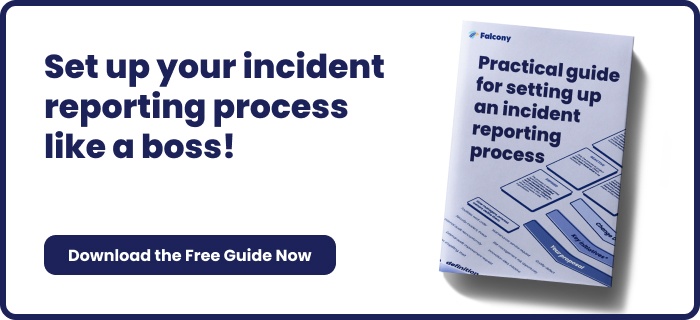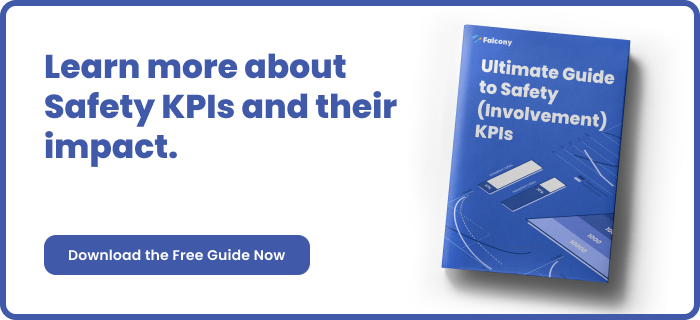What is Permit Register?
In industries that involve high-risk operations, such as construction, manufacturing, chemicals, and energy, the importance of ensuring safety cannot be overstated.
Whether managing hazardous chemicals, heavy machinery, or working at height, maintaining strict safety protocols is a requirement that must be met. One of the key tools used in ensuring operational safety is a permit register. But what exactly is a permit register, and why is it such a crucial component in risk management?
Defining Permit Register
A permit register is a systematic log or database used to track and manage the issuance of permits for specific high-risk activities within the workplace. These permits are formal authorisations that allow particular tasks to be carried out under defined conditions to mitigate risks and ensure safety standards are met. They are typically linked to a range of hazardous tasks, such as hot work (e.g., welding), confined space entry, electrical work, and excavation, which could pose safety hazards without proper oversight.
By documenting and tracking these permits, organisations can control and monitor activities, ensuring they only proceed once all the necessary safety measures and precautions are in place. It also helps in making sure that work is completed according to regulations, in a structured manner, and with the right level of risk management.
The Importance of Permit Register
Ensuring Safety
The primary objective of a permit register is to ensure that hazardous activities are carried out safely. In environments with significant risks, such as chemical plants, oil refineries, or construction sites, a permit register acts as an essential control tool. It ensures that specific tasks do not commence unless all necessary safety conditions are in place. This includes having the correct safety equipment, qualified personnel, risk assessments, and safety procedures in place.
Permits typically specify the conditions under which work may be conducted, the hazards involved, and the precautions required to manage those hazards. Without this structure, workers might inadvertently begin tasks under unsafe conditions, leading to accidents, injuries, or even fatalities. By requiring formal approval before work begins, the permit register mitigates this risk.
Compliance with Regulations
For many industries, the issuance of permits is not only a best practice but a legal requirement. Safety regulations often mandate that high-risk activities must be authorised through a formal process. A permit register helps businesses comply with these legal requirements and stay aligned with safety standards set by industry regulators. This can include adherence to national and international standards for safety, environmental protection, and workplace health.
In sectors such as the oil and gas industry, where stringent safety regulations govern work environments, maintaining a permit register is crucial for passing audits and inspections. It demonstrates the company’s commitment to adhering to laws and regulations, reducing the potential for fines, sanctions, or legal repercussions.
Enhanced Risk Management
A permit register is an integral part of an organisation’s risk management strategy. The permits issued for specific tasks are typically accompanied by risk assessments and safety measures that help identify and mitigate potential hazards before work begins. This proactive approach helps reduce the likelihood of accidents or unforeseen incidents during operations.
Risk mitigation through the permit register extends beyond worker safety. For example, permits related to hot work can ensure that appropriate fire safety precautions are in place, while confined space entry permits will outline steps to avoid oxygen deficiency, gas poisoning, or entrapment. Thus, the permit register provides a clear process for controlling and managing risks associated with hazardous activities, whether on the ground, underground, or at heights.
Audit Trail and Documentation
A well-maintained permit register serves as a crucial documentation and audit trail for workplace activities. In the event of an incident or accident, the register can provide detailed information on who authorised the work, what safety measures were outlined, and whether those measures were followed. This is essential for investigating the root cause of incidents and improving safety protocols moving forward.
By having a detailed record of all permits issued, companies are better prepared for internal audits and external inspections. The permit register provides transparency, accountability, and evidence that safety procedures have been followed, helping organisations demonstrate their commitment to safety and compliance.
Improved Operational Efficiency
In addition to its safety and compliance benefits, a permit register can also improve operational efficiency. The register allows managers to see which tasks are scheduled and when, helping avoid conflicts or scheduling issues. For instance, it ensures that permits for certain activities do not overlap, particularly where there may be risks associated with concurrent operations.
In the case of construction sites, a permit register allows project managers to ensure that specific equipment, tools, and personnel are available when required. This optimises workflow and ensures that tasks are not delayed or hampered by miscommunication or lack of preparation. In turn, this improves overall productivity.
Integration with Digital Platforms
In recent years, many organisations have moved from paper-based permit registers to digital systems, recognising the advantages of technology in managing such critical documentation. Digital permit-to-work systems offer several benefits over traditional methods:
-
Real-Time Tracking and Updates: Digital systems allow for immediate updates when permits are issued or amended. This ensures that the most current information is available at all times, improving safety and coordination.
-
Reduced Risk of Human Error: Automated systems reduce the potential for errors that could occur with manual data entry. Digital systems often include built-in checks to ensure that all safety criteria have been met before a permit is issued.
-
Increased Accessibility: Digital permit registers can be accessed from multiple locations by authorised personnel. This is especially beneficial for large projects or operations with multiple teams, ensuring that everyone is working from the most up-to-date information.
-
Integration with Other Risk Management Systems: Many modern permit-to-work systems integrate with other safety and compliance management tools, allowing for a seamless approach to health, safety, and environmental (HSE) management. For example, they can be linked with environmental monitoring systems or emergency response plans, ensuring comprehensive safety oversight.
Types of Permits Typically Managed in Register
The types of permits included in a permit register can vary depending on the industry and the nature of the work. However, some common examples include:
-
Hot Work Permits: Required for tasks that involve open flames, sparks, or heat-producing equipment, such as welding, cutting, or grinding. These permits ensure that fire safety measures are in place.
-
Confined Space Entry Permits: Issued for work in areas that are not designed for continuous occupancy and may pose hazards such as toxic atmospheres, low oxygen levels, or the potential for entrapment.
-
Electrical Work Permits: Required for any electrical work that could present a risk of electrical shock, fires, or explosions. These permits ensure that proper isolation procedures are followed.
-
Excavation Permits: Necessary for any excavation or digging operations to avoid risks such as cave-ins or accidental damage to underground utilities.
-
Working at Height Permits: Issued when tasks are performed at elevations where there is a risk of falling. These permits ensure the use of appropriate fall protection and safety measures.
Implementing Permit Register System
Implementing an effective permit register system is essential for managing and mitigating risks associated with high-hazard activities. Whether you choose a manual or digital system, the key is ensuring safety, compliance, and efficiency. Here’s how to implement a permit register system successfully:
Choosing the Right System
The first step is selecting the system for tracking and managing permits. Organisations can use manual paper-based systems or digital systems.
-
Manual Systems: These involve paper logs where permits are issued and stored. While cost-effective for smaller operations, they are prone to human error and misfiling.
-
Digital Systems: Digital platforms offer real-time tracking, automated workflows, and seamless integration with other safety management tools. These systems improve efficiency and accuracy and reduce the risk of errors.
Customising the System
The system must be tailored to the specific needs of your organisation. This includes defining the types of permits required (e.g. hot work, confined space entry), setting approval workflows, and establishing permit closure procedures to ensure safety standards are met.
Integration with Other Systems
For maximum effectiveness, integrate the permit register with other safety and operational systems. Integration with risk management and maintenance management systems helps ensure that only safe equipment is used, and all risk assessments are documented. Connecting to training records ensures that only qualified individuals can perform high-risk tasks.
Real-Time Monitoring and Alerts
Digital permit systems enable real-time tracking and provide automated alerts for permit expiry, safety breaches, or necessary updates. This helps ensure that tasks are not started without the proper approvals and safety measures in place.
Training and User Adoption
Proper training is vital for ensuring the system’s success. Workers must be familiar with how to issue, approve, and close permits, whether using a manual or digital system. Ongoing support and refresher courses ensure that everyone remains up-to-date with the process.
Continuous Improvement
Once the system is in place, it’s important to continuously assess its effectiveness. Regular audits and feedback from users help identify areas for improvement and ensure the system evolves in line with changing safety regulations and operational needs.
Conclusion
A permit register is an essential tool for ensuring safety and compliance in high-risk industries. By tracking permits and ensuring that work is carried out under defined conditions, it helps reduce the risk of accidents, protects workers, and ensures that safety protocols are followed. Whether in paper or digital form, a well-maintained permit register is integral to an organisation’s safety management framework, improving both operational efficiency and compliance with safety regulations. Through the use of this tool, businesses can demonstrate their commitment to maintaining a safe work environment, ensuring that critical tasks are carried out safely, responsibly, and in full compliance with relevant standards.
If you're looking for a platform to manage any and all types of records, we've got you covered. Falcony | Registries is easy-to-use, boosts two-way communication, has customisable workflows, automated analytics, vast integration possibilities and more. Start your 30-day trial or Contact us for more information:
We are building the world's first operational involvement platform. Our mission is to make the process of finding, sharing, fixing and learning from issues and observations as easy as thinking about them and as rewarding as being remembered for them.
By doing this, we are making work more meaningful for all parties involved.
More information at falcony.io.

Related posts
Why You Need Work Permits for Hot Works?
Hot work, which includes any operation that involves open flames, heat, or the generation of...
10 Common Checklists Used in Oil and Gas Industry
In the high-risk environment of the oil and gas industry, safety, efficiency, and compliance are...
15 Types of Safety Incidents in Manufacturing Industry
The manufacturing industry is critical to the economy, providing a vast array of goods and...







